While the big news from Fox is the introduction of the all-new Fox 38 super-enduro fork, it's been very busy completely redesigning the 36 and 40 forks, as well as its heavy-hitting shocks, the X2 and DHX2.
You can read all about the 2021 Fox 38 here, along with more detail on the fork technologies and updates that are shared with the 36 and 40, including a more thorough explanation of the shared fork updates, the air bleeders, air/oil channels, floating axle, updated GRIP2 damper and new rounded arch design.
In this article, we'll briefly outline the technologies shared by all three forks, then go through the tech specs of each of Fox's 2021 forks and shocks to see how they compare.
Key updates to the Fox 36, 38 and 40 forks
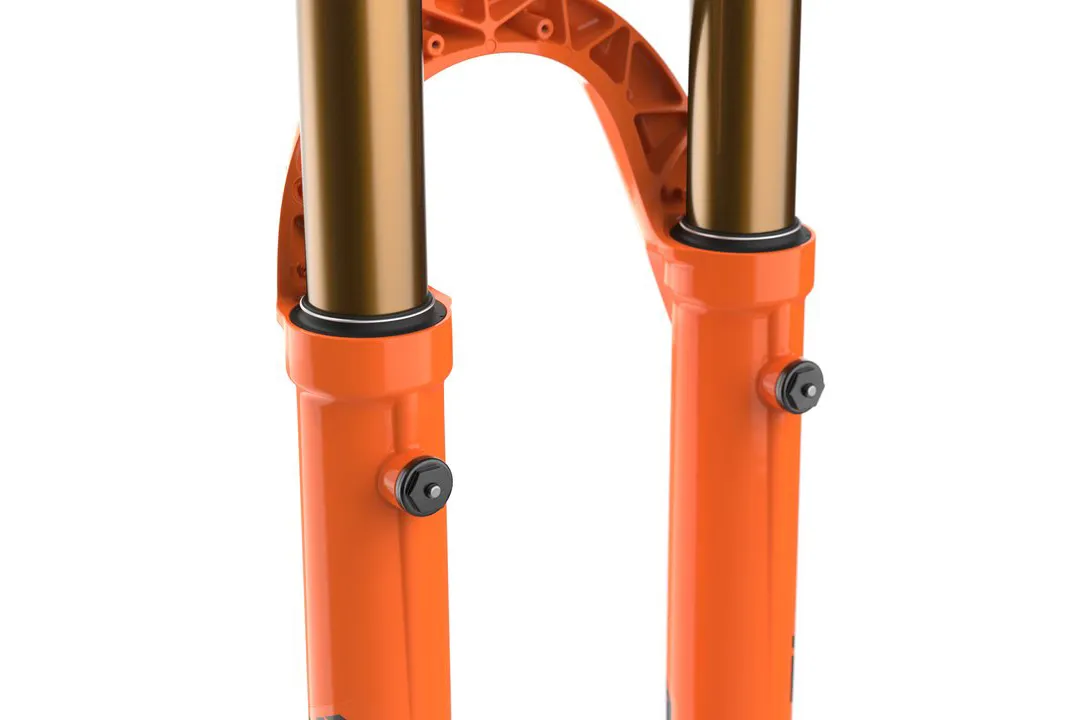
- New lower leg bleeders release excess air pressure, which can build up in the lowers, particularly when riding in hot weather or at altitude. This pressure can otherwise reduce initial sensitivity
- New air/oil channels allow trapped air in the lowers to flow past the bushings into the space above. This should make it easier to access full travel (unless you add volume spacers to compensate). The channels are also designed to allow lower leg oil to move up into the bushings to keep them lubricated
- A new floating axle for the 36 and 38 clamps the hub directly, rather than pulling the fork lowers towards the hub. This allows for poor hub tolerances, so the legs remain perfectly parallel even if the hub is narrower than advertised (which can happen), thereby reducing friction
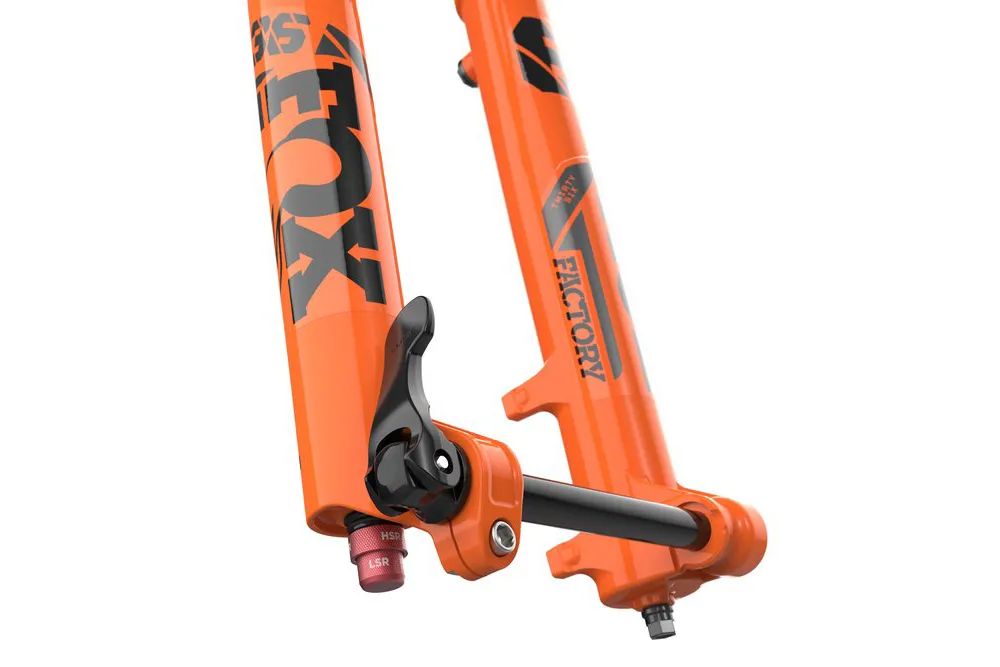
- Forks will ship with a quick release version of the floating axle, which should be calibrated to match the hub width once per wheel. After which, it works like a normal QR axle
- New, more rounded arch improves head tube clearance at bottom out, while increasing stiffness-to-weight
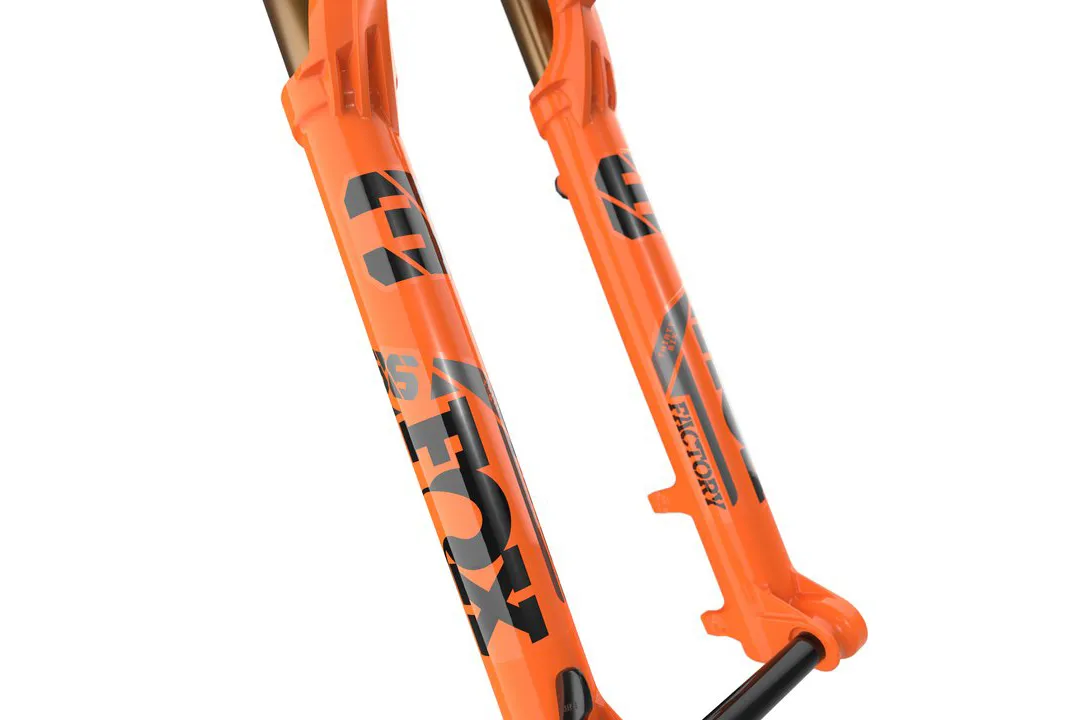
- An updated GRIP2 damper uses VVC (variable valve control) on the compression as well as rebound valving. In theory, this should make for a more linear increase in damping force as the suspension speeds increase, especially when using firmer high-speed compression damping settings
- Optional bolt-on mudguard
2021 Fox 36 specs
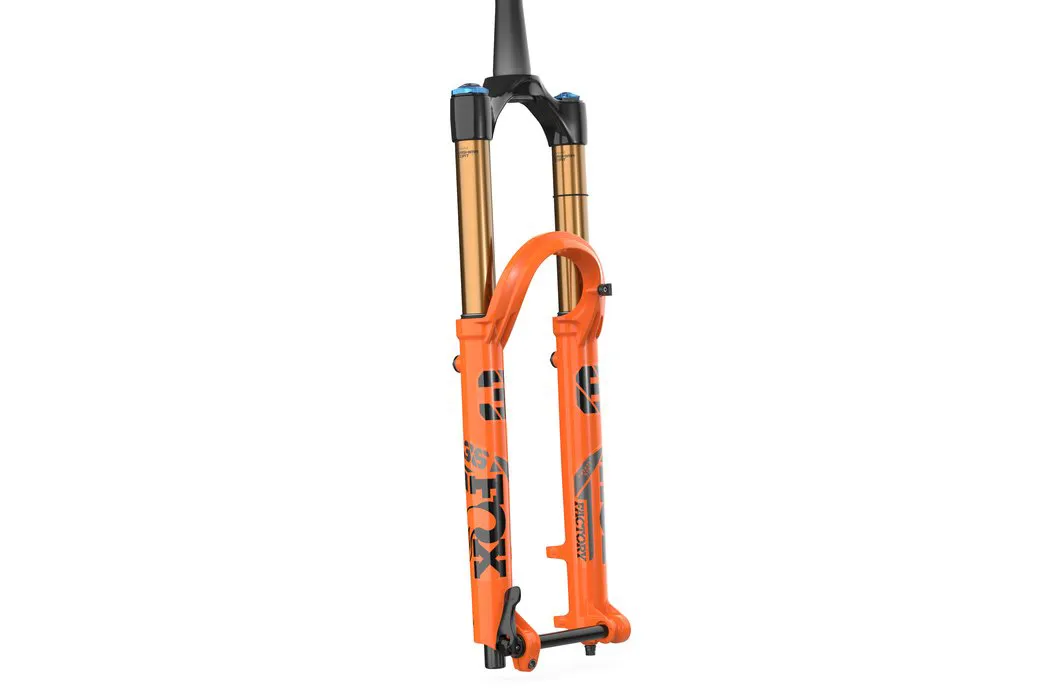
- Travel options: 150 and 160mm
- Claimed starting weight: 1,965g,
- Measured weight: 2,107g (160mm-travel, 29in, uncut steerer)
- Offset options: 37mm (27.5in only), 44mm and 51mm (29in only)
- Damper options: Updated GRIP2, GRIP
- Price: €1,339–€1,459 / $849–$1,099 / CDN $1,129–$1,449
- Updated EVOL air spring with increased negative volume. Unlike the 38, the spring still uses the stanchion as the air sleeve
- Redesigned chassis with new arch shape, floating axle, air bleeders and air/oil channels
2021 Fox 38 specs
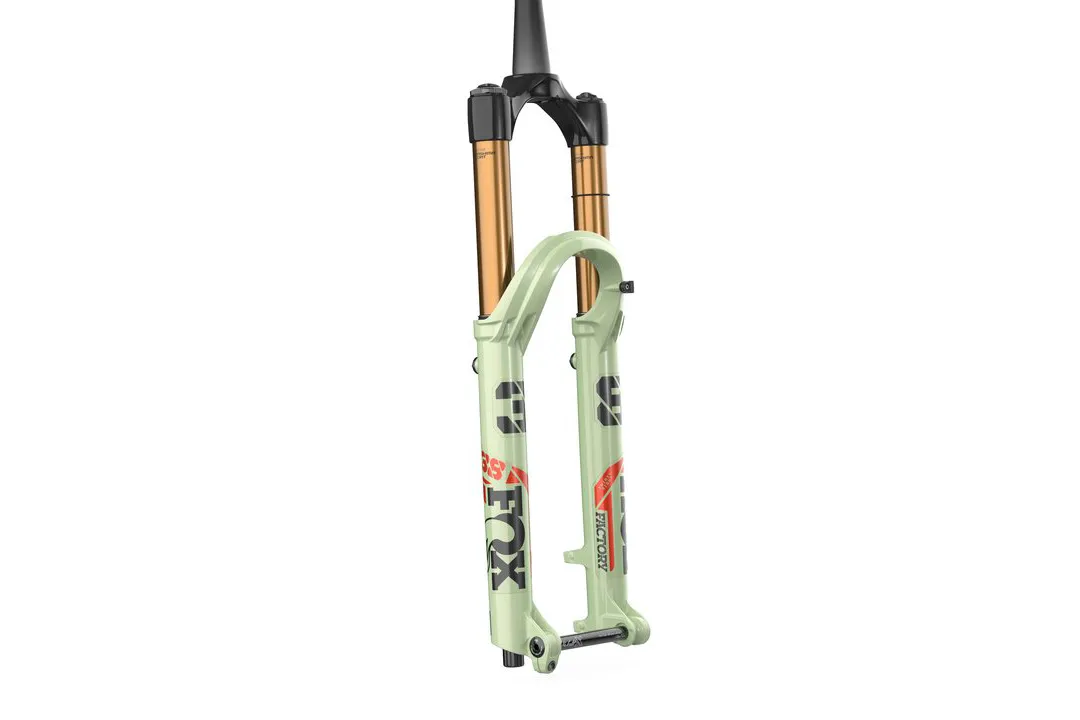
- Travel options: 160, 170, or 180mm
- Claimed starting weight: 2,180g,
- Measured weight: 2,363g (170mm travel, 29in, uncut steerer)
- Offset options: 37mm (27.5in only), 44mm and 51mm (29in only)
- Damper options: Updated GRIP2, GRIP
- Price: €1,259–€1,589 / $949–$1,199 / CDN $1,249–$1,579
- Claimed 31 per cent stiffer laterally, 17 per cent stiffer fore/aft and 38 per cent torsionally stiffer than the 2021 Fox 36. (Fox couldn't tell me how the the stiffness of the 2021 36 compares to previous models)
- Elliptical steerer tube for improved fore-aft stiffness
- The air spring uses an internal air sleeve, rather than using the stanchion as the sleeve. This is claimed to reduce friction due to smaller internal diameter and therefore surface area, and because the separate air spring is somewhat isolated from chassis flex, reduce side-load on the piston
- New 38mm chassis with new arch shape, floating axle, air bleeders and air/oil channels
2021 Fox 40 specs
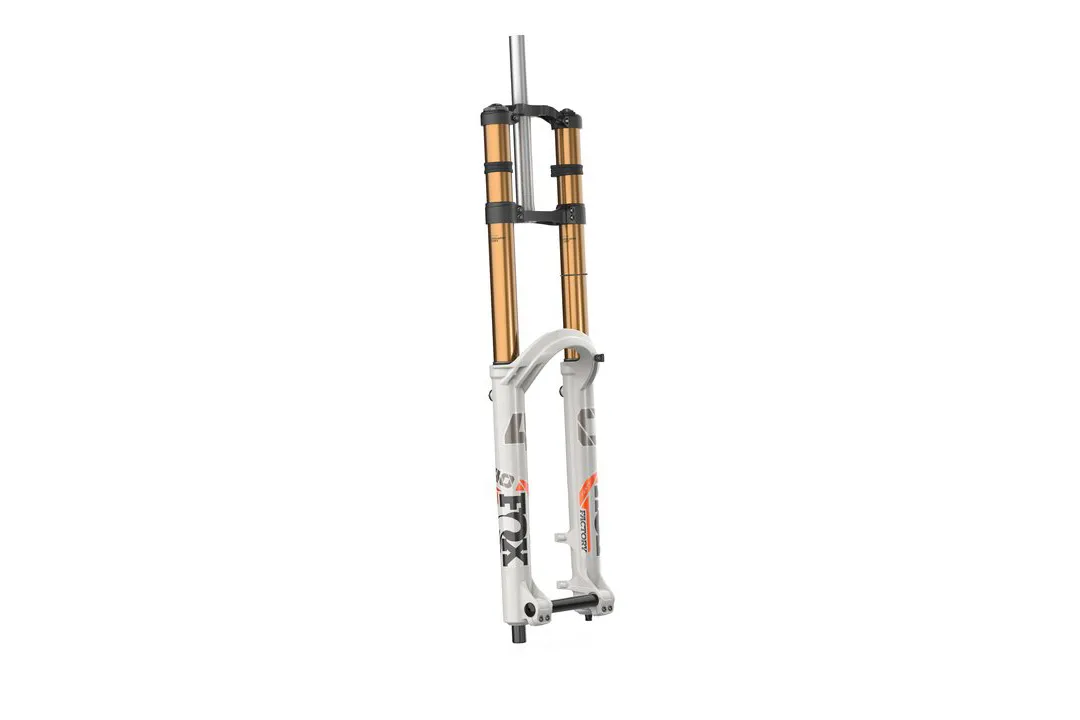
- Travel options: 203mm travel only
- Claimed starting weight: 2,816g (2020 claimed weight was 2,780g)
- Offset options: 27.5in – 48mm or 52mm; 29in – 52mm or 56mm. The 2020 offsets were 52mm only (27.5in) and 58mm only (29in)
- Damper options: Updated GRIP2 damper with VVC in compression and rebound
- Price: €2,299 / $1,749 / CDN $2,309
- Updated EVOL air spring with increased negative volume
- Redesigned chassis with new arch shape, air bleeders and air/oil channels
2021 Fox Float X2 specs
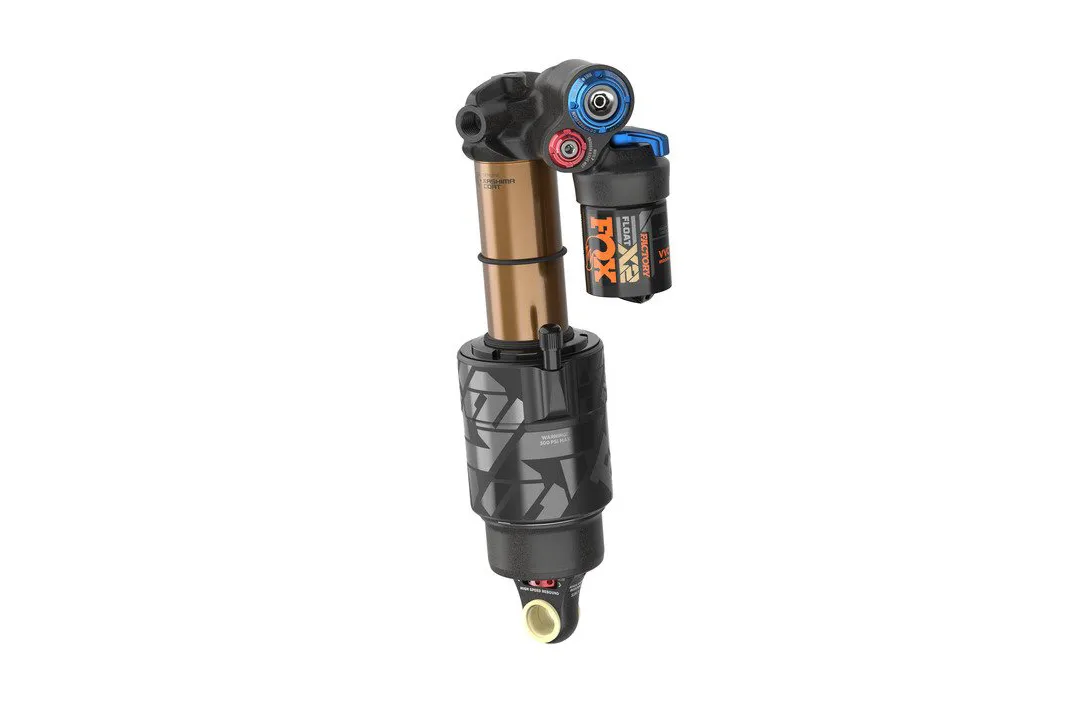
- Completely redesigned chassis, damper, and “progressive” bottom-out bumper
- 8-click HSC and HSR adjustment matches GRIP2 forks
- High speed rebound now uses VVC (Variable Valve Control) valving, like GRIP2 forks. High-speed compression is still controlled by a poppet style valve, where the spring which holds the valve closed is preload-adjustable
- Lockout is firmer than previous Float X2, thanks to a separate lockout valve.
- Shorter piggyback reservoir to fit more frames.
- Stiffer (finned) damper body is designed to reduce hysteresis. What is hysteresis? After the shock changes direction, there is a lag before the damping force builds up to where it should be. This is partly because the damper body flexes and seals are pushed back, allowing oil to move out of the way rather than through the valves. This lag is known as hysteresis – most suspension brands try to minimise its effect (though some think it can be beneficial)
- Updated air spring requires fewer volume spacers for the same support.
- New lower-friction seals and harder-wearing damper shaft finish
- Price: €849–€889 / $639–$669 / CDN $789–$879
2021 Fox X2 specs
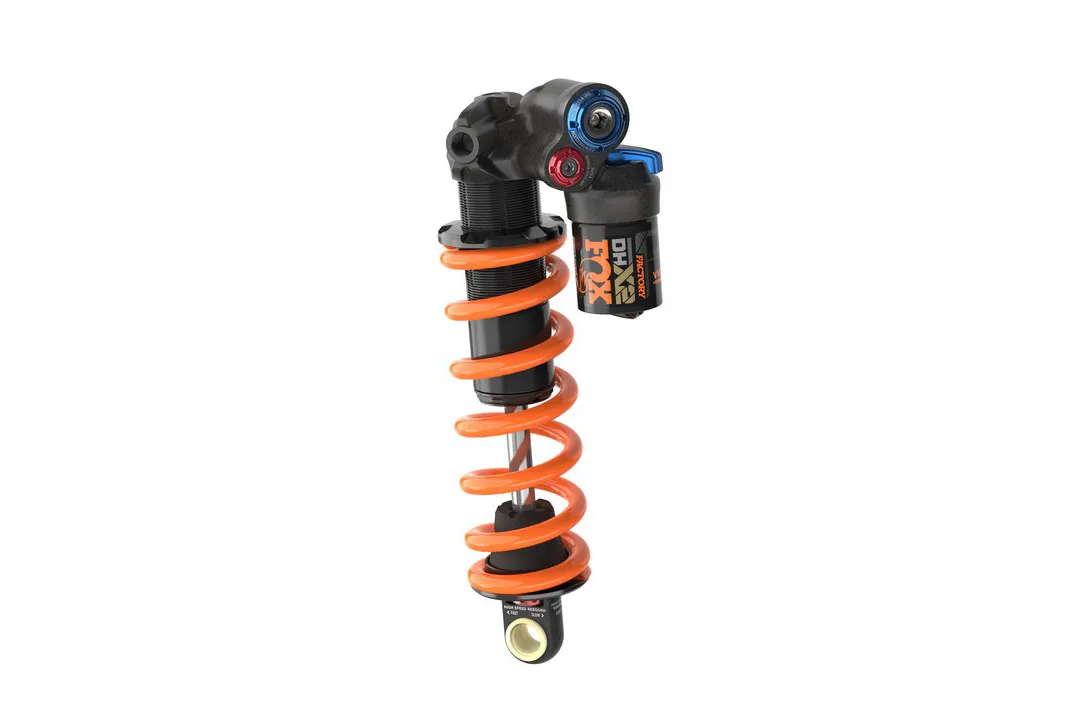
- Completely redesigned chassis, damper, and “progressive” bottom-out bumper
- 8-click HSC and HSR adjustment matches GRIP2 forks and X2 shocks
- High speed rebound now uses VVC (Variable Valve Control) valving, like GRIP2 forks. High-speed compression is still controlled by a poppet style valve, where the preload of the spring that holds the valve closed is adjustable
- Lockout is firmer than previous Float X2, thanks to a separate lockout valve
- Shorter piggyback reservoir to fit more frames
- Stiffer damper body (now made from steel) is designed to reduce hysteresis (for the same reason as with the Float X2)
- Spring preload collar uses a steel detent ball to stop it winding off, allowing for lighter spring preload.
- New lower-friction seals and harder-wearing damper shaft finish
- Price: €819–€859 / $619–$649 / CDN $759–$859
